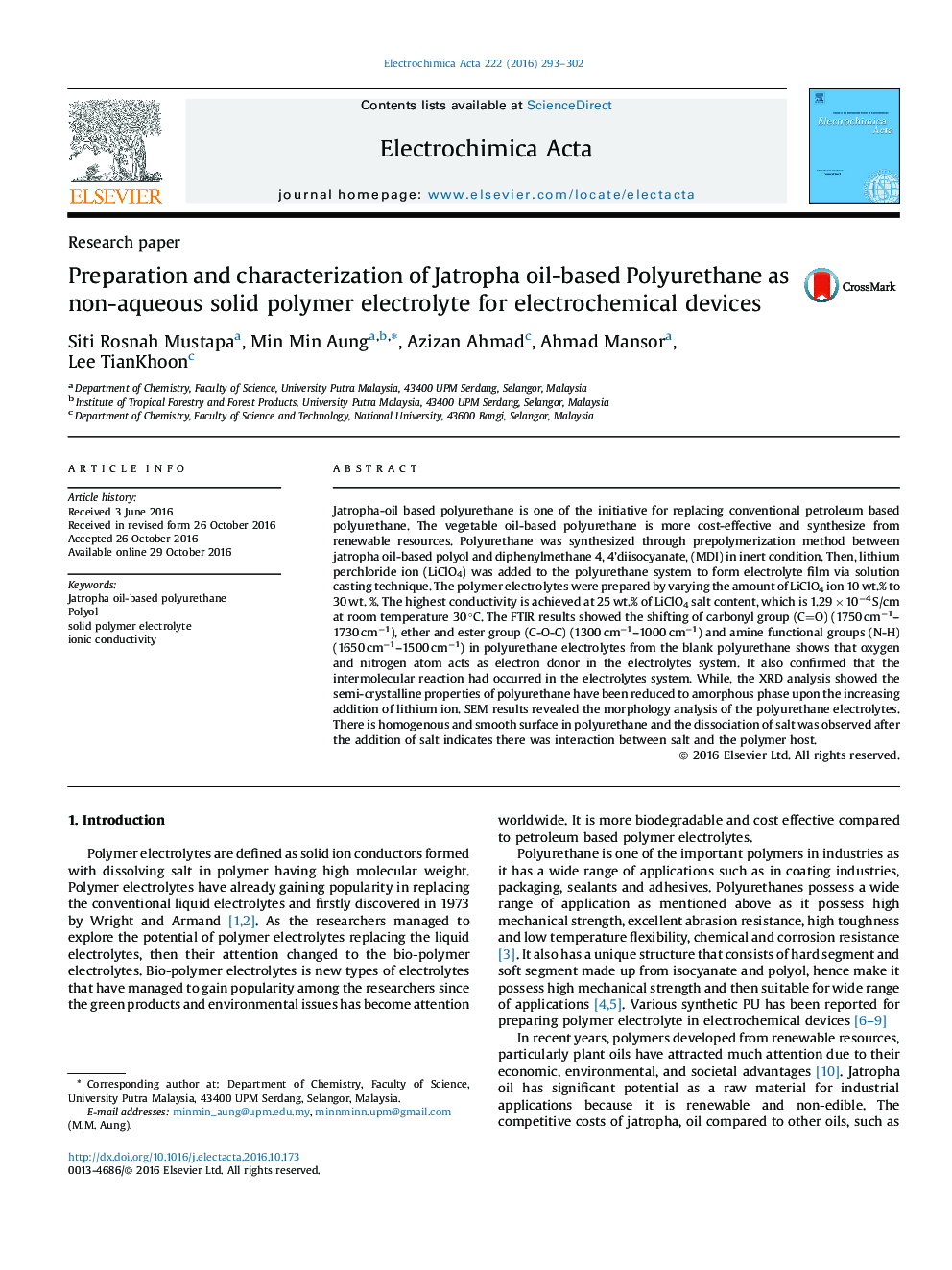| Article ID | Journal | Published Year | Pages | File Type |
|---|---|---|---|---|
| 6472554 | Electrochimica Acta | 2016 | 10 Pages |
Jatropha-oil based polyurethane is one of the initiative for replacing conventional petroleum based polyurethane. The vegetable oil-based polyurethane is more cost-effective and synthesize from renewable resources. Polyurethane was synthesized through prepolymerization method between jatropha oil-based polyol and diphenylmethane 4, 4'diisocyanate, (MDI) in inert condition. Then, lithium perchloride ion (LiClO4) was added to the polyurethane system to form electrolyte film via solution casting technique. The polymer electrolytes were prepared by varying the amount of LiClO4 ion 10 wt.% to 30 wt. %. The highest conductivity is achieved at 25 wt.% of LiClO4 salt content, which is 1.29 Ã 10â4 S/cm at room temperature 30 °C. The FTIR results showed the shifting of carbonyl group (CO) (1750 cmâ1- 1730 cmâ1), ether and ester group (C-O-C) (1300 cmâ1-1000 cmâ1) and amine functional groups (N-H) (1650 cmâ1-1500 cmâ1) in polyurethane electrolytes from the blank polyurethane shows that oxygen and nitrogen atom acts as electron donor in the electrolytes system. It also confirmed that the intermolecular reaction had occurred in the electrolytes system. While, the XRD analysis showed the semi-crystalline properties of polyurethane have been reduced to amorphous phase upon the increasing addition of lithium ion. SEM results revealed the morphology analysis of the polyurethane electrolytes. There is homogenous and smooth surface in polyurethane and the dissociation of salt was observed after the addition of salt indicates there was interaction between salt and the polymer host.
